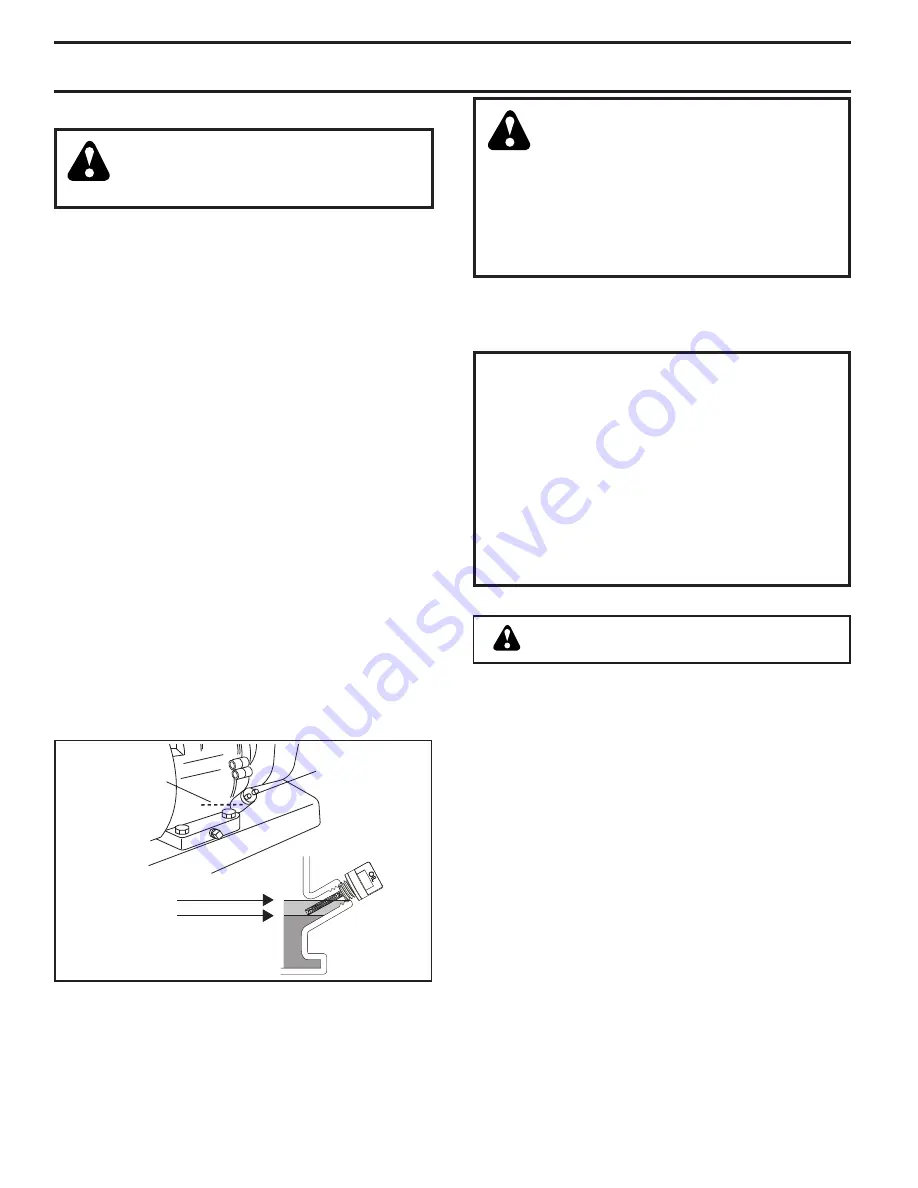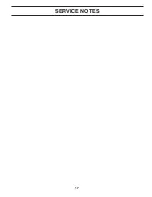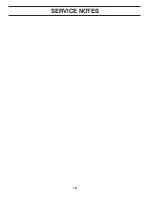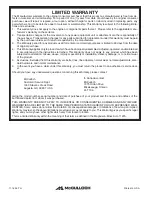
8
TO TRANSPORT
CAUTION: Before lifting or trans port ing,
allow tiller engine and muffler to cool.
Disconnect spark plug wire. Drain
gasoline from fuel tank.
AROUND THE YARD
• Tip depth stake forward until it is held by the stake
spring.
• Push tiller handles down, raising tines off the ground.
• Push or pull tiller to desired location.
AROUND TOWN
• Disconnect spark plug wire.
• Drain fuel tank.
• Transport in upright position to prevent oil leakage.
Fig. 7
BEFORE STARTING ENGINE
IMPORTANT
: BE VERY CAREFUL NOT TO ALLOW DIRT
TO ENTER THE ENGINE WHEN CHECKING OR ADDING
OIL OR FUEL. USE CLEAN OIL AND FUEL AND STORE IN
AP PROVED, CLEAN, COVERED CONTAINERS. USE CLEAN
FILL FUNNELS.
FILL ENGINE WITH OIL (See Fig. 7)
• With engine level, remove engine oil filler plug.
•
Fill engine with oil to point of overflowing. For ap prox-
i mate ca pac i ty see “PRODUCT SPEC I FI CA TIONS” on
page 3 of this manual.
• Tilt tiller back on its wheels and then re-level.
• With engine level, refill to point of overflowing if nec-
es sary. Re place oil filler plug.
• For cold weather operation you should change oil for
easier starting (See “OIL VISCOSITY CHART” in the
Maintenance section of this manual).
• To change engine oil, see the Maintenance section of
this manual.
OPERATION
ADD GASOLINE
• Fill fuel tank to bottom of filler neck. Do not overfill.
Use fresh, clean, regular un lead ed gasoline with a
minimum of 87 octane. (Use of leaded gasoline will
increase carbon and lead oxide deposits and reduce
valve life). Do not mix oil with gasoline. Purchase fuel
in quan ti ties that can be used within 30 days to assure
fuel freshness.
CAUTION: Fill to within 1/2 inch of top
of fuel tank to prevent spills and to allow
for fuel expansion. If gasoline is ac-
ci den tal ly spilled, move machine away
from area of spill. Avoid creating any
source of ignition until gasoline vapors
have disappeared.
Wipe off any spilled oil or fuel. Do not
store, spill or use gasoline near an
open flame.
IMPORTANT:
WHEN OPERATING IN TEMPERATURES
BELOW32°F(0°C), USE FRESH, CLEAN WINTER GRADE
GAS O LINE TO HELP INSURE GOOD COLD WEATHER
START ING.
CAUTION: Alcohol blended fuels (called
gas o hol or using ethanol or methanol) can at-
tract moisture which leads to sep a ra tion and
for ma tion of acids during storage. Acidic gas
can damage the fuel system of an engine while
in storage. To avoid engine problems, the fuel
system should be emptied before stor age of
30 days or longer. Drain the gas tank, start
the engine and let it run until the fuel lines
and carburetor are empty. Use fresh fuel next
sea son. See Storage In struc tions for additional
information. Never use engine or carburetor
cleaner products in the fuel tank or permanent
damage may occur.
TO START ENGINE (See Fig. 8)
CAUTION: KEEP TINE CONTROL IN “OFF”
PO
SI TION WHEN STARTING ENGINE.
When starting engine for the first time or if engine has run
out of fuel, it will take ex tra pulls of the recoil starter to
move fuel from the tank to the engine.
1. Make sure spark plug wire is prop er ly connected.
2. Place the fuel valve to the "ON" position.
3. To start a cold engine, move the choke lever to the
"ON" position.
4. Move the throttle lever away from the "SLOW" position,
about 1/3 of the way toward the "FAST" position.
5. Turn the engine switch to the "ON" position. Pull rope
out slowly until engine reaches start of com pres sion
cy cle (rope will pull slightly harder at this point).
6. Pull recoil starter handle quickly. Do not let starter
handle snap back against starter. Repeat if neces-
sary.
NOTE:
IF ENGINE FIRES BUT DOES NOT START, MOVE
CHOKE CONTROL TO HALF CHOKE POSITION. PULL RECOIL
STARTER HANDLE UNTIL ENGINE STARTS.
7. If the choke lever has been moved to the "ON" position
to start the engine, gradually move it to the opposite
position as the engine warms up.
NOTE:
A WARM ENGINE REQUIRES LESS CHOK ING TO
START.
8. Move throttle control to desired running position.
9. Allow engine to warm up for a few min utes before
engaging tines.
NOTE:
IF ENGINE DOES NOT START, SEE TROU BLE SHOOT ING
POINTS.
eng
ine
_art
_4
Oil Level
Oil Filler
Plug
Max Upper Level
Min Lower Level
Summary of Contents for 532 43 21-09
Page 1: ...532 43 21 09 MC900 Operator s Manual 96083000400 2009 11...
Page 17: ...17 SERVICE NOTES...
Page 18: ...18 SERVICE NOTES...
Page 19: ...19 SERVICE NOTES...






































